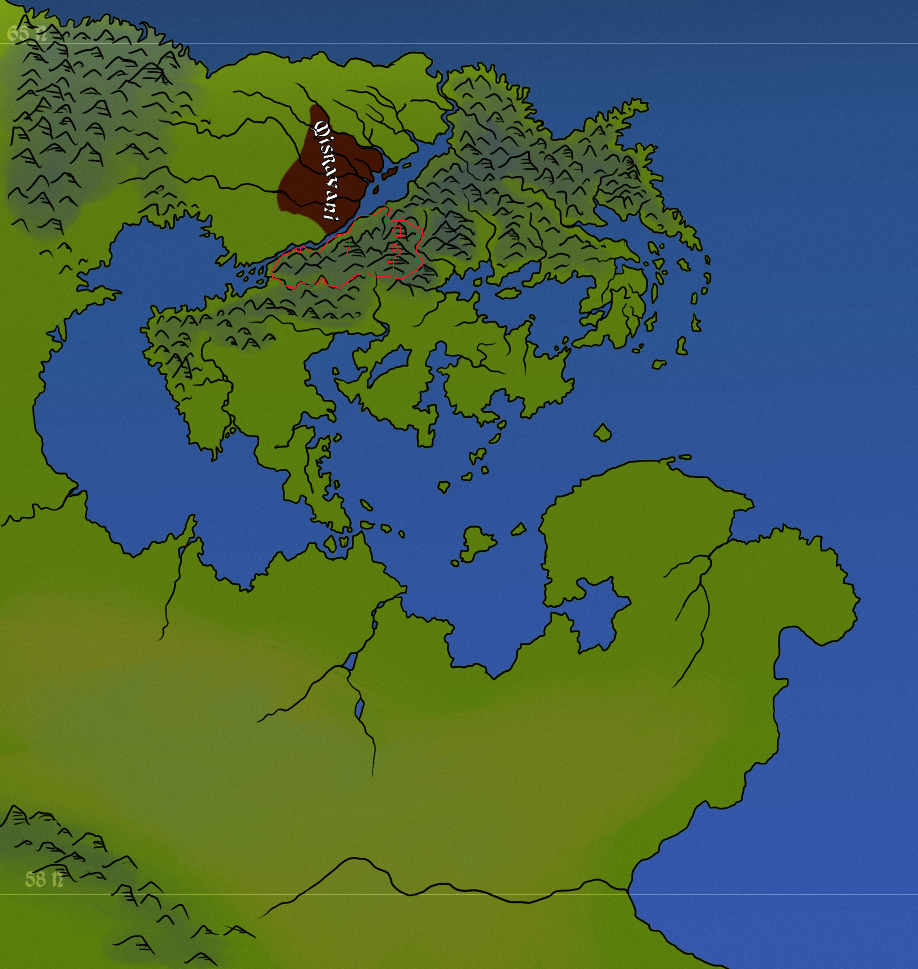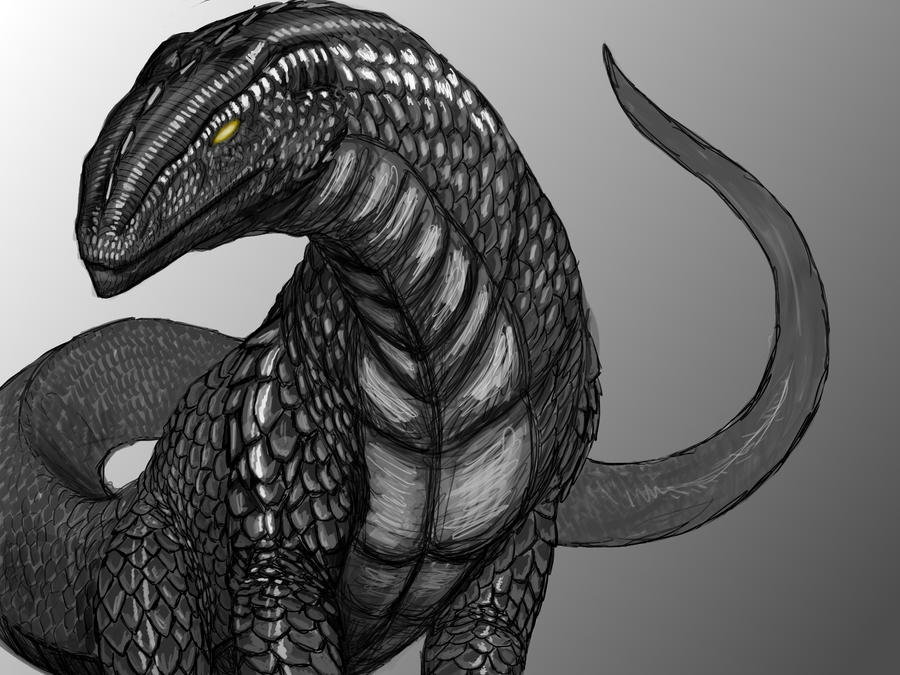Name
Misravani/Misrŭvani
Territorial Claims

Background
The Misravani are a people of migrations, having over generations migrated east-ward from the far west during times of oral history as they slowly pursued game through the verdant valleys and forests of the western north. Hailing from a greater people refereed to by the Misravani themselves as the Antevich the Misravani have settled in their verdant river valleys as farmers after the development of agriculture in the highlands. As society developed the population shifted and came to settle along the river banks where they traded among themselves.
An organized Misravani society did not arise for many centuries. For generations inter-village warfare rose and fell over conflict for land-rights or marital contests between prominent families between villages. The Misravani were without king or high chief until the arrival of the man named Misruid.
Described as a man of almost impossible height, Misruid was said to be more than capable of standing toe-to-toe with a bear. The man's foul temper and abundant wroth was said to have leaked into his hair, turning the hair of his head and beard a bright fiery red from the earliest age. But while he was a man to not sit still, he was not incapable. While he came from seemingly nothing or nowhere Misruid acquired renown when he beat and killed the chiefs of several village in hand-to-hand combat. Out of respect the village's surrendered themselves to him and named him chief of chiefs.
This stoked the embers of ambition within Misruid and he set out to seek the subjugation of others. Within time he became the Bane of the Ves River as the townships along the river's shores one-by-one succumbed to Misruid from the springy head of the river to its confluence with the longer Devier. With each victorious battle he was named chief once more.
In the fifteenth year of Misruid's reign the realm's augur's confirmed Misruid to be an avatar of the god Tharun. The lended credibility of divine power gave in the people's eyes a legitimacy to the rule of Misruid, who came to symbolize not just tyrannical oppression but an ending of generations of squabbling independence and a return to the unified peace of the Days of Heroes, when Wismir was said to have set out into the woods to find and kill the Borovoi of the Tusta so as to save the god Welen's daughter from a degenerated spirit.
The proclamation of Misruid as a divine figure lifted pressure from his shoulders as rising warriors thought they could take the kingdom out from under the powerful but aging king by their own force. While each attempt to slay him had ended in failure for the young warriors the constant fighting was distracting from the broader manners of managing a tribal fiefdom. And being crowned the first High King, Misruid sought a haven for his rule and picked a spot where the Ves and Devier met, the location of where his earlier conquests had ended, and he hoped would soon resume. There he built Misrugłaz, his own personal hamlet. On a hill that commanded a striking view of the river below he built a wooden compound of ancient oak trees. By his command, the inner sanctum was to be built so large it would threaten the tribes across the river into submitting and to construct it he led countless forays into the wilderness to capture by force armies of slaves.
It was said in these raids he took so many men folk that entire villages were reduced to just the women and children who had hid in the forest when his men came with their spears and axes. Misruid's men would later come again in smaller numbers and take the women and children, often without so much as raising a spear in violence to overcome the beleaguered survivors.
Misrugłaz was eventually finished, but the great king was coming to the end of his life. A wound in his leg and become embroiled in a fierce infection. Feigning strength he struggled to contain it, and did so well enough to pass functionally at court. He personally administered the bandages, packing them with dried flowers to mask the smell of the festering wound but could do little for the pain that was blooming in his leg. He had to die soon, and he knew it.
To pass away from an injury and not in battle was to Misruid a grave injustice. In private on his last day he summoned for his son Lesovichk, in the king's private chambers in his towering wooden citadel in Misrugłaz that it was time for his departure, and he would hand the throne and all titles to the son that could kill their father in battle. Though with only daughters and all other sons being too young to hold a blade, Lesovichk at fifteen was the only candidate that could accomplish it.
With the ceremony drawn and plans made, Misruid demanded the duel to take place at sundown at the confluence of the two rivers. There father and son met for the last time and a brief duel commenced. Lesovichk killed his terminal father, impaling the old man on his sword as he was mid-stride for a great swing from the shoulder.
To Lesovichk, the sealing of his coronation was a bitter-sweet moment. And he secluded himself in the forest for several weeks after seeking guidance and alms for his fratricide.
His return was quickly met with strife as many old chiefs who heard of the death of Misruid formed a coalition to break from what was now Lesovichk's realm. Rallying the men still loyal to him he marched to meet the quarrelers in the field of battle and to preserve his father's legacy. The ensuing battle fought at Vrāna field seventy-five miles north-west of Misruglaz was a decisive victory for Lesovichk where he proved to be as much a dragon as his father in combat, swiftly killing or raking prisoner the ranking chiefs of the enemy army and leading a retinue of men that broke the back of the enemy force.
The ferocity and total efficiency of Lesovichk earned him the epithet the Wolf Dragon.
With the rebellion quelled, and the land redistributed among the loyal families Lesovichk settled back into the estate his father build and over his reign shaped it into a city. Lesovichk - for all his battle prowess - proved hardly eager to enter into successive wars and preferred to brood in his father's hallowed halls and iron out the bumps and ruts that decades of constant warfare had caused in the realm. Lesovichk was a shaper of a realm and from tribal holdings made a kingdom.
Inspired by distant lands he had visited as an official envoy on voyaging ships Lesovichk wanted to emulate the foreign people's in the land beyond the Farraige; or the More as it was known to the People of Misruid.
Lesovichk though failed in many ways as tribal chieftains curtailed many of his edicts by way of tribal veto. But he succeeded in several areas. Namely, he had enforced the authority and prestige of Misrugłaz as a city as it evolved on the river banks taking trade from three directions and becoming a major river port of call for many merchants, over land and river. He gave Misruglaz great walls which he covered he red clay, laying the first segments of the foundation himself. He coordinated with the priests in an attempt to give the crown more powerful, creating at least the idea of the Crown of Misruid and of the Zemlyanarod.
He would succumb to pneumonia after a cold rainy day and die early in bed the next day. The priests proclaimed him post-mortem an avatar of the god Weles, god of Earth and sustenance.
While Lesovichk did not go like his father, passing the crown down to his son by requesting his son or any fit heir to kill him the act was replicated by successive kings and became established heritage. While it had a loose definition of how it was to be done with it beginning with an open challenge made by the king or a demand made by the sons, or against one or all it continued on down through the land and from the passing of the Misruid dynasty when the adventuring son of the Lesser King of the neighboring Illmeshk clan challenged Wemir, the last king of the Misruid dynasty to a trial by combat and for the crown, after the wandering son had killed the king's sons when they harassed him on the road under the guise of bandits.
Prada Kishmek-Illmeshk thus became the first king of the Misruid-Illmeshky kingdoms. Under the Illmeshk rule the size of the Misruid Crown's rule doubled. Authority of the Illmeshk to rule though was not drawn from authority of the gods, which had been granted by the priesthood to each successive Misruid king since Misruid himself, but in that Prada took for wives several of Wemir's daughters and enjoined the Misruid - from where the Misrŭvani have gotten their name - blood-line with his own, though Prada himself also took many younger concubines.
______________
The Misrŭvani kingdom military employs little standing soldiers. The chieftains and king themselves may hold their own private professional retinue of local minor nobles of wandering adventurers or mercenaries the largely agrarian and rural kingdom does not have the organization or wealth to field a permanent standing army. At times of dire need or war they may however draw from across the realm a levee force of able men of all ages, depending on season.
Though while these retinues are strong it's not impossible or unheard of for adventurous sons of chiefs or the king himself to rally around him a small band of fortune seekers from any rung of society - high or lowborn - to go on the long march or set to sail to loot, raid, or serve as mercenaries in their own right in the court of foreign and distant lands.











